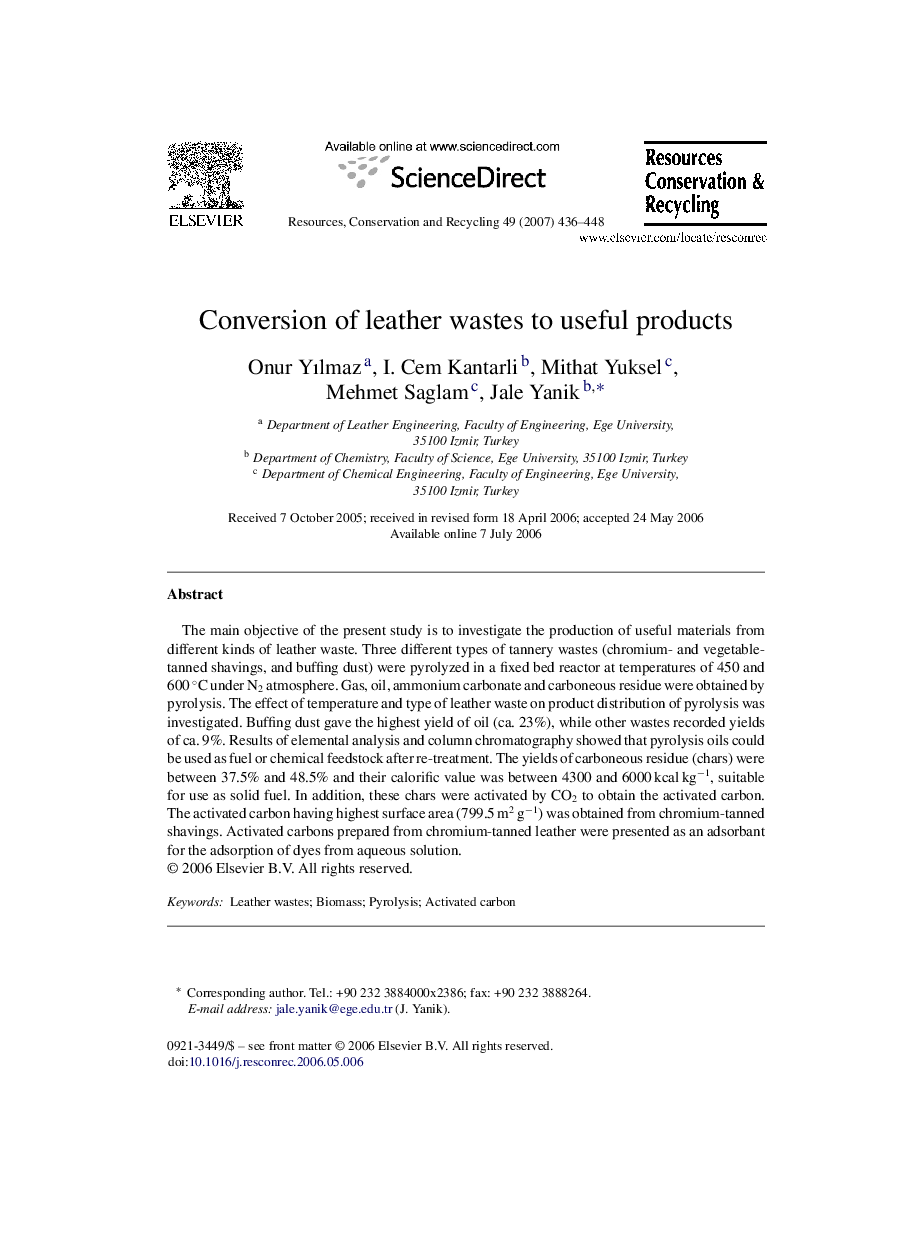| Article ID | Journal | Published Year | Pages | File Type |
|---|---|---|---|---|
| 1064127 | Resources, Conservation and Recycling | 2007 | 13 Pages |
The main objective of the present study is to investigate the production of useful materials from different kinds of leather waste. Three different types of tannery wastes (chromium- and vegetable-tanned shavings, and buffing dust) were pyrolyzed in a fixed bed reactor at temperatures of 450 and 600 °C under N2 atmosphere. Gas, oil, ammonium carbonate and carboneous residue were obtained by pyrolysis. The effect of temperature and type of leather waste on product distribution of pyrolysis was investigated. Buffing dust gave the highest yield of oil (ca. 23%), while other wastes recorded yields of ca. 9%. Results of elemental analysis and column chromatography showed that pyrolysis oils could be used as fuel or chemical feedstock after re-treatment. The yields of carboneous residue (chars) were between 37.5% and 48.5% and their calorific value was between 4300 and 6000 kcal kg−1, suitable for use as solid fuel. In addition, these chars were activated by CO2 to obtain the activated carbon. The activated carbon having highest surface area (799.5 m2 g−1) was obtained from chromium-tanned shavings. Activated carbons prepared from chromium-tanned leather were presented as an adsorbant for the adsorption of dyes from aqueous solution.
